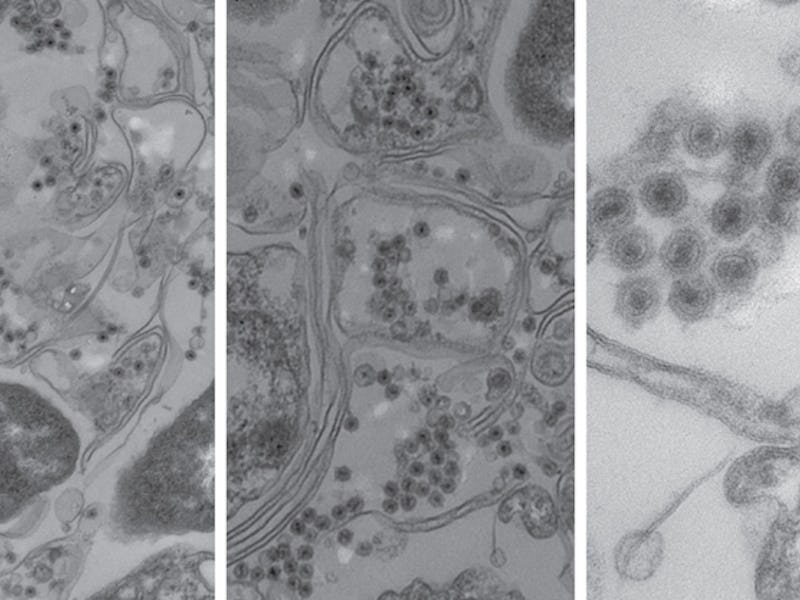A Never-Before-Seen Virus Was Just Found in the Sea, and It Kills Bacteria
Their genomes are "quite different from other viruses."

When you think of a virus, you likely think of the microscopic agents that make life on land feel like a snot-infused hell. There are 219 virus species known to infect humans — rhinovirus, the poliovirus, influenza strains, and the like, which invade living cells, rapidly multiply, and make you sick.
In the ocean, there are approximately 10 million viruses in every milliliter of water. On Wednesday, scientists announced they discovered a new, never-before-seen family of viruses to add to the mix: abundant, bacteria-killing non-tailed viruses possibly related to bacterial viruses that invade the human gut. This discovery was published in Nature and made by scientists from MIT and the Albert Einstein College of Medicine.
This group of viruses — named Autolykiviridae after Autolycus, a particularly elusive character from Greek mythology — was never analyzed before because previous tests haven’t been able to detect them. While most viruses on land and in the ocean are double-stranded DNA viruses equipped with a “tail” that infects bacteria, this new group belongs to the non-tailed family, which have been historically much harder to analyze.
The Autolykivirdae are thought to play an important ecological role in the ocean as major bacteria-killers. In the study, the researchers collected samples of water off the coast of Massachusetts, and the viruses found in the samples were then incubated alongside a family of marine bacteria called Vibrionaceae. The researchers then analyzed the genomes of the viruses that successfully infected the bacteria. Of the 200 viruses collected, 18 were previously unrecognized and were non-tailed — the Autolykivirdae.
Co-author Kathryn Kauffman processes seawater samples.
They then turned the new group of viruses loose on 300 strains of marine bacteria and compared how much damage the new group inflicted in contrast to tailed viruses. While the new group made up just 10 percent of the viruses observed, they did 40 percent of bacterial killing. Since these microscopic, oceanic predators were able to infect marine bacteria taken from outside of Massachusetts waters, the researchers were led to believe this group could potentially thrive throughout the ocean.
Further analysis also revealed that the genomes of the new group were actually smaller than those of other viruses: Their genomes consist of 10,000 bases, compared to the typical 40,000 to 50,000.
“When we found that, we were surprised,” co-author Martin Polz, Ph.D., announced in a statement released Wednesday.
Polz and his team also suspect that this new group of viruses are not ocean-specific and could be common within the human biome as well. The viruses, related to an ancient lineage that has been found previously in animals and eukaryotic organisms like algae, could have an effect on the human gut microbiome, say the researchers.
While we don’t typically think of viruses as good, some viruses can protect humans against bacteria, instigating events like the creation of mucus, which can drive out germs. We don’t have a great sense of what exactly they do, but the gastrointestinal tracts of mammals are full of viruses — suggesting they likely play an important job in maintaining our health.
In turn, this newly discovered group of viruses kill ocean bacteria, which are considered key components of the food chain, and this biological interaction is thought to maintain ecological balance. Not all viruses are created equal, but we’re only at the tip of the iceberg in understanding the extent of what they can do.
If you want to learn more about this new group of viruses, check out this explainer from study co-author Libusha Kelly, Ph.D., an assistant professor at the Albert Einstein College of Medicine.